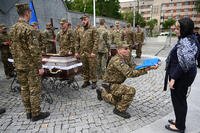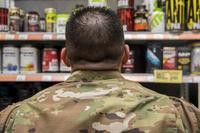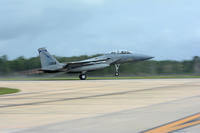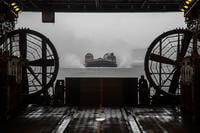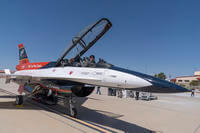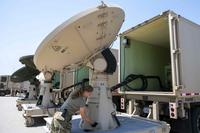U.S. Special Operations Command is recalling thousands of body armor plates after discovering a manufacturer’s defect that could put operators at risk. At the same time defense industry experts are questioning whether SOCOM may have added to the risk by searching for the lightest plates possible.
Throughout the war, elite troops have worn body armor known as the Special Operations Forces Equipment Advanced Requirements, or SPEAR, made by Ceradyne Defense. The lightweight, ceramic plates have proven to be effective at stopping enemy rifle bullets and weigh significantly less than the conventional Army’s Enhanced Small Arms Protective Insert, or ESAPI.
A little less than a year ago, government inspectors discovered a defect in Ceradyne’s new SPEAR Gen III plates. The special, metal “crack arrestor” in the back of the plate began separating or “delaminating” from the plate’s ceramic material. The arrestor was designed to reduce the spreading of cracks in the ceramic when dropped – a common characteristic of all ceramic body armor plates.
SOCOM officials did not respond to questions from Military.com by press time and Ceradyne officials said that a clause in the company’s contract with SOCOM prohibits them from talking about the issue.
Identifying these tiny separations is tricky. Right now, a “tap test” is being used to detect the problem, according to industry sources. Apparently, tapping the back of a defective plate sounds very different than a plate that doesn’t have the defect.
SOCOM conducted more tests of its inventory of new Gen IIIs and found the several hundred with the same defect. Ceradyne received a “stop work” order in the early part of this year and was given time to solve the problem, industry sources said.
Before being approved, Ceradyne’s fix to the problem would have to pass “first-article testing” a rigorous battery of tests conducted on all new plate designs.
Body armor technology has come a long way since the beginning of the war. Military developers and armor manufactures have learned a great deal in the last decade, but recalls of defective body armor are nothing new.
In June 2010, the Army recalled 13,000 ESAPI plates made by ArmorWorks because they weren’t built to government specifications. But Pentagon officials still maintain that no service members have died as a result of their body armor being penetrated anything it was designed to stop.
In addition to SPEAR, Ceradyne makes most of the military’s ESAPI plates. Army officials have chosen the ESAPI design over SPEAR because it provides protection from armor-piercing rifle rounds found on the battlefield.
SPEAR plates are designed to stop the same threats as ESAPI, but additionally SOCOM placed a high priority on reducing the weight of armor plates to give operators increased mobility and stamina. Some industry sources maintain that SOCOM may have pushed too far this time.
SPEAR Gen III is the latest version of the design and is slightly lighter and thinner than the previous two versions.
“SOCOM drives plates to the absolute edge of technology,” said one industry source with detailed knowledge of the SPEAR program who asked to remain anonymous. “Every time you decrease the weight, you take away a little performance.”





